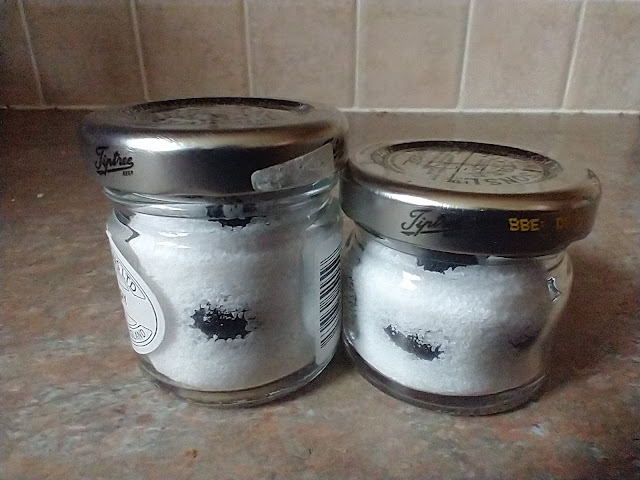Extra virgin olives
I harvested last year's olive crop from my patio allotment over the weekend. As you can see the olive growers of Spain, Italy and Greece can rest easy 🤣
Inspired by Andrew's recent post on Facebook and being a curious, experimental soul, I'm having a go at turning them from completely inedible* into something that might just**, grace one of the Greek salads we have on a weekly basis.
I've have some of those teeny tiny jam jars - saved from tea shop forays just in case they come in handy - and after discarding the wrinkly ones and the stems into the compost bin, I have just** enough olives to fill 2 of them. I found the instructions for dry salt-cured olives Andrew mentioned in his post, which in turn has a link to how to pit olives when they're ready to eat in around three weeks time.
Wish me luck.
Next up is olive tree pruning***, once we've got rid of this spell of cold weather.
* = reader, I tried one 😬
** = only just mind
*** = I'm going for a loose, topiary-style effect












I have pickled our olives each year for a long time, and they come out beautifully.
ReplyDeleteI usually have several kilos, so cutting a nick into each one to let the brine is is a bit arduous, but once you get into a rhythm, it doesn't take long.
They are soaked in brine for 10 days, changing the solution daily.
Then stored in a stronger solution until required.
I then wash them and add a little olive oil and a lot of basil and store in the fridge.
You can add garlic pieces, but I found that they went mouldy before we had finished the olives, so I now omit that.
I'm envious of your kilos! Your way is the one I knew about but looked better for when you have a larger crop. I was pleased to find there's also a dry salt cure which looked perfect for a little experiment with my tiny crop.
DeleteYes, of course, it wouldn't be worth all the bother for just a few olives.
DeleteI would be interested to hear how yours taste at the end of curing.